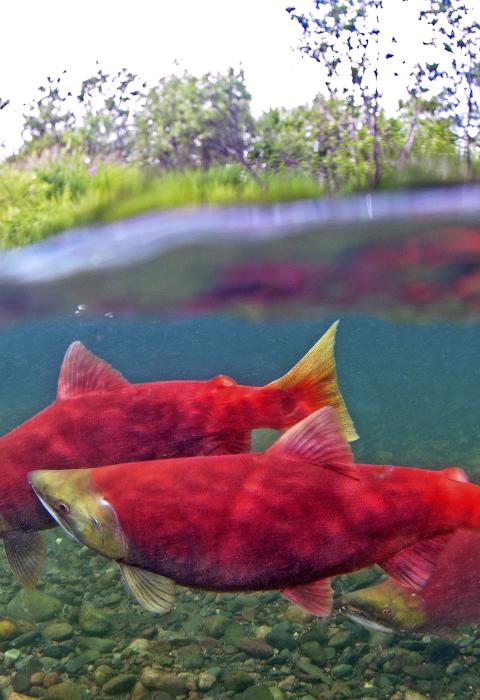Aniakchak River
Alaska
The Aniakchak River lies completely within Aniakchak National Monument and Preserve and consists of the river and its major tributaries—Hidden Creek, Mystery Creek, Albert Johnson Creek, and the North Fork Aniakchak River. The Aniakchak River is the longest river on the Alaska Peninsula that drains to the Pacific Ocean. The river provides a nationally unique opportunity to travel the entire length of the river, from its origin within an active volcanic caldera to its terminus at the Pacific Ocean. Flooding, rockfalls, and slides alter the river within The Gates on a regular basis, as well as the river downstream. The river’s flow is primarily snowmelt and runoff.
Designated Reach
December 2, 1980. That portion of the river—including its major tributaries, Hidden Creek, Mystery Creek, Albert Johnson Creek, and the North Fork Aniakchak River—within the Aniakchak National Monument and Preserve.
Outstandingly Remarkable Values
Ecology
The river provides an example of the natural process of biological succession in an intact setting unaffected by human activity. The river is a primary vector for colonization and provides opportunities to study and document the link between colonization and succession dynamics of an active volcanic landscape. Traveling downstream from the caldera, the river makes a dramatic transition from a barren landscape to a biologically productive riparian/estuarine system.
Fish
The Aniakchak’s water chemistry and gradient create challenging biophysical conditions; however, healthy populations of fish, including sockeye salmon and Dolly Varden, exist and thrive in the river system. Repeated geological disturbances have wiped out fish populations and created an ideal opportunity to study recolonization.
Geology
The Aniakchak River owes its existence to a catastrophic breach of the 30-square-mile caldera that drained the crater’s lake in a matter of hours. The river contains impressive flood deposits, including extremely large boulders in the upper portion. The upper portion also has one of the steepest gradients of any floatable river, dropping at more than 75 feet/mile. Exposed fossils exist along the river corridor; these paleontological resources range from dinosaur footprints to marine and terrestrial fossils.
Recreation
The Aniakchak River offers extremely remove, isolated, and challenging hike-in or fly-in float trips through spectacular, primordial scenery and Class IV white water. Accessing the caldera and then exiting through The Gates is the capstone experience on the river. The downstream segment, with its lower gradient, provides more tranquil waters for paddlers to relax after enduring the intense white waters of the higher reaches of the river.
Scenery
Cloud niagaras and notoriously bad weather enrich the stark beauty of the headwaters of the Aniakchak River. Upon leaving the volcano, the river plundges through “The Gates,” a narrow V-shaped canyon. The river then transitions to a broad verdant valley with large cutbanks, oxbow lakes, and coastal bluffs before entering the Pacific Ocean.

